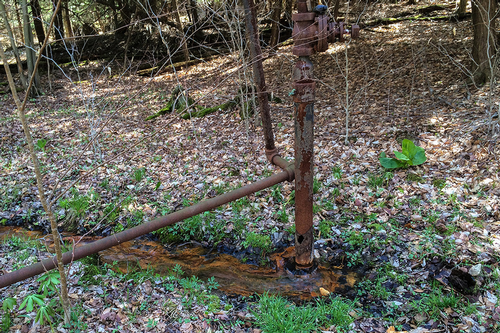University Engineers Flexible Nanomaterial Cement
WEDNESDAY, DECEMBER 23, 2020
According to a team of scientists from Penn State University, a newly developed nanomaterial cement mixture could be a cost-effective solution in sealing leaking natural gas wells.
Research on the material has since been published in the International Journal of Greenhouse Gas Control.
The Research
As a part of common practice when drilling a natural gas well, the pipe or casing is often coated with a cement to secure the infrastructure to the surrounding rock and create a seal so that methane is prevented from migrating into the shallow subsurface.
These wells can sometimes extend for miles underground and the cement can degrade over time after years of changing temperatures and pressure. To fix these issues, repairs usually involve the injection of cement in very narrow areas between the pipe or casing and rock, which calls for the use of a specialized cement material.

 |
| Pennslyvania Department of Environmental Protection |
|
According to a team of scientists from Penn State University, a newly developed nanomaterial cement mixture could be a cost-effective solution in sealing leaking natural gas wells. |
“We have invented a very flexible cement that is more resistant to cracking,” said Arash Dahi Taleghani, associate professor of petroleum engineering at Penn State. “That’s important because there are millions of orphaned and abandoned wells around the world, and cracks in the casings can allow methane to escape into the environment.
“In construction, you may just mix cement and pour it, but to seal these wells you are cementing an area that has the thickness of less than a millimeter, or that of a piece of tape. Being able to better pump cement through these very narrow spaces that methane molecules can escape from is the beauty of this work.”
Dahi Taleghani, alongside Maryam Tabatabaei, a postdoctoral scholar in the John and Willie Leone Family Department of Energy and Mineral Engineering, looked into the development of a new material, finding that when 2D graphite—more affordable than other nanomaterials—was added, a new cement mixture was created and was better equipped to fill the aforementioned narrow spaces, in addition to having stronger and more resilient properties.
In addition to developing the cement material, the scientists also developed a multistep process to uniformly distribute sheets of the nanomaterial into a cement slurry. By treating the graphite first with chemicals, the scientists were able to change its surface properties so the material would dissolve in water instead of repelling it.
“If we just pour this material in the water and mix it, these small particles have a tendency to stick together and form a conglomerate,” Dahi Taleghani said. “If they are not dispersing evenly then the graphite is not as strong inside the cement.”
The resulting flexible cement mixture is expected to be used in both active unconventional wells but could also be used to seal orphaned or abandoned wells. The product also shows promise for use in carbon dioxide capture and storage technology, added research scientists.
“Considering the low cost of the amount of graphite nanoplatelets required for this test, this technology may provide an economic solution for industry to address possible cementing problems in the field,” Dahi Taleghani said.
Tagged categories: Cement; Cementitious; Coating Materials; Coating Materials; Colleges and Universities; Oil and Gas; Repair materials; Research; Research and development








